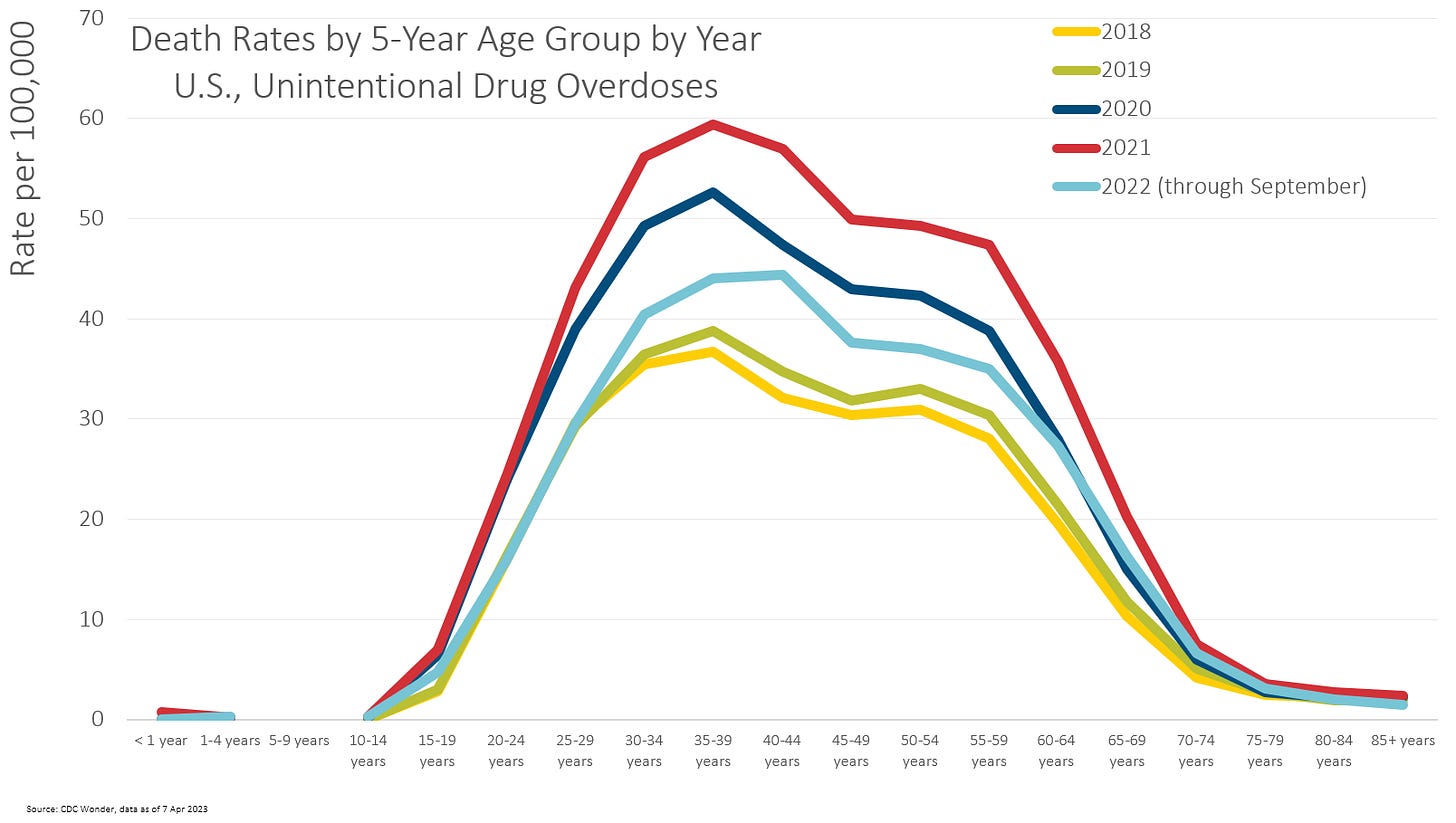Good Friday: St. Matthew Passion and Data Update
I suppose I could make a tenuous connection via St. Matthew as tax collector
First, my favorite performance of the St. Matthew Passion by J.S. Bach:
Description:
Apr 2, 2019
The St Matthew Passion performed by the Netherlands Bach Society for All of Bach. Whether or not they are an enthusiast of classical music, practically everyone in the Netherlands knows the St Matthew Passion. Since 1870 the Netherlands has had a rich tradition of annual St Matthew Passion performances. The Netherlands Bach Society was formed in 1921, in reaction to the popular performances by Willem Mengelberg and the Concertgebouw Orchestra. The founders believed that the St Matthew should be performed where it belonged – in a church. The annual performance by the Bach Society in Naarden grew to become 'the' Dutch St Matthew Passion.
I’ve listened to this twice today already.
If you want a libretto with translation (and some commentary) to follow along, I recommend this from Minnesota Public Radio:
The St. Matthew Passion
By Rex Levang, April 2001
When J. S. Bach came to write his St. Matthew Passion in the 1720s, the passion, as a musical form, had grown to allow orchestra, choirs, and non-scriptural choruses and arias. But even by the standard of the Baroque passion, the Passion According to St. Matthew is exceptional for its musical richness and its grand scope.
Musically, the score is of imposing length, and calls for double orchestra and double choir—three choirs, at one point. The musical textures range from complex counterpoint to simple hymns. Dramatically, the point of view shifts regularly, from the narrative of the Evangelist, to the actual words of Jesus and his disciples, to reflections that speak for the individual believer. But in Bach's hands, the effect that the Passion gives is not one of a brilliant collage, but a single, sustained, somber meditation—appropriate for a work that was first performed as part of a church service.
Scholars believe the first performance of the St. Matthew Passion may have been in 1727. It was certainly performed on Good Friday of 1729, and perhaps at several other Good Friday services during Bach's life. It then dropped from public view until 1829, when it was triumphantly revived by Felix Mendelssohn, crystallizing a revival of interest in Bach that grew throughout the 19th century and still continues.
The text of the passion was created by the German writer Christian Henrici, who wrote under the pen name of Picander. Like Bach, he lived in Leipzig, and it is believed that he and Bach worked closely together on the text.
There are three strands in the text: the actual text from the book of Matthew; Picander's own poetry; and the pre-existing hymns, or chorales, which Bach incorporates into the score, which would have been immediately recognizable by his first hearers.
And if you want to do an even deeper dive into the St. Matthew Passion (and Bach’s music generally), I highly recommend Robert Greenberg’s lectures on Bach and the High Baroque from the Great Courses.
Lectures 25–28 examine the St. Matthew Passion, a massive and deeply moving work that has no model, no precedent, and no equal in the Baroque era. Matthew's dark and very human telling of the trials and crucifixion of Jesus is brilliantly realized by Bach in a work set for two full choruses, two full orchestras, and two sets of vocal soloists. It is a work at once magnificent and intimate, despairing and filled with faith.
Yes, the list price is high (never pay retail), but you can usually access these through libraries for free, and I have access through my Wondrium subscription.
Data Update for Mortality Presentation
There was a CDC WONDER update this week, so I updated my recent mortality presentation.
Slides and spreadsheets are available at this dropbox link:
https://www.dropbox.com/sh/wl2mz5ulfv2hkv7/AADJf184S_DKCWUdLy5H1__Ia?dl=0
If you’re only interested in the slides, here ya go:
Most of the data for 2022 did not change significantly, except for the external causes of death, because those lag far more in reporting than standard “natural” causes of death.
Because those types of causes of death (accidents, homicides, and suicides) are delayed in detail for 6 months in CDC Wonder, I don’t have any data for October - December 2022 for those types of causes of death.
In the interim, this is what the accidental drug OD death rates look like now:
And, for a quick bonus, I did total count of deaths by month, and then interpreted that into average deaths/day:
I will be doing a deeper dive into that later.
That’s not in the presentation — the drug overdose trend deserves its own entire presentation.
But in the interim… enjoy Good Friday.





